Dodge Challenger Evolution: The Legendary Muscle Car
We're diving into the heart and soul of American muscle cars: the one and only Dodge Challenger.
Updated: December 6, 2023 // Car Evolutions
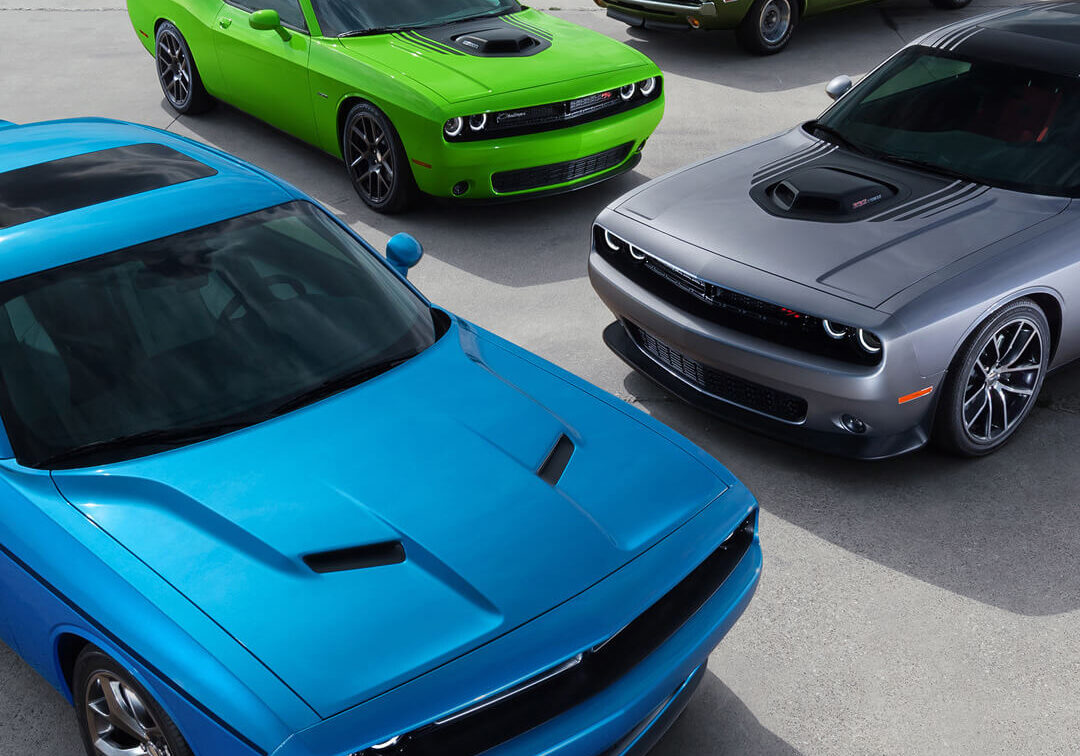
Home // Car Evolutions //
For over half a century, the Dodge Challenger – a quintessential symbol of American muscle cars – has been dominating our streets. Rocking a bold look, killer engines, and a name that commands respect, the Challenger has been making waves in the car scene ever since its debut back in ’70. From its humble beginnings as a competitor to the Ford Mustang to its modern-day incarnation as a true icon of the muscle car era, the Challenger has gone through many changes over the years. Diving into the journey of the Challenger, from its birth to now, we see how this iconic American muscle car keeps winning over auto buffs globally. All of these cars are able to be built to be real powerhouses and can also be easily modified with some bolt-on upgrades.
The 1st Generation: Born to Compete
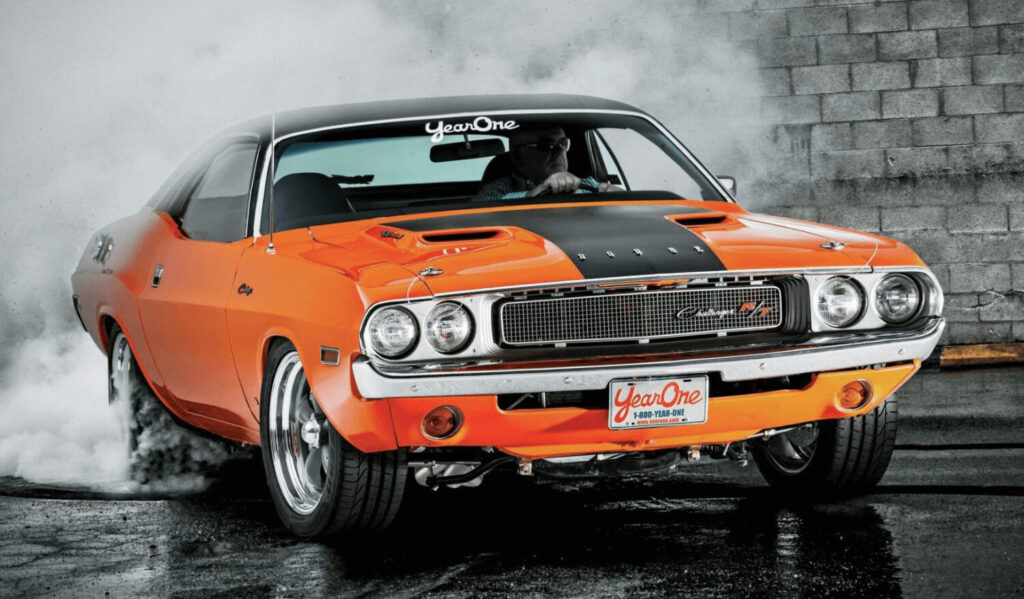 The first-generation Challenger was a beast of a machine, introduced in 1970 and designed to compete with the Ford Mustang, the king of the muscle car scene at the time. With a frame two inches longer than the Barracuda, the Challenger boasted an E-Body platform that made its road presence even more commanding. Four headlights decked out the car’s front grill, making it look rather intimidating and further boosting its standout presence on the road. Packed beneath its hood, the Challenger boasted an array of engines – a humble straight-six with 101 horsepower, a beefy 383 cubic-inch V8 and even the monstrous Hemi V8 at 426 cubic inches, belting out an astounding 425 horses. The Challenger was undeniably a pure embodiment of muscle car ethos, flaunting an audaciously potent engine and brawny design that exuded aggression.
The first-generation Challenger was a beast of a machine, introduced in 1970 and designed to compete with the Ford Mustang, the king of the muscle car scene at the time. With a frame two inches longer than the Barracuda, the Challenger boasted an E-Body platform that made its road presence even more commanding. Four headlights decked out the car’s front grill, making it look rather intimidating and further boosting its standout presence on the road. Packed beneath its hood, the Challenger boasted an array of engines – a humble straight-six with 101 horsepower, a beefy 383 cubic-inch V8 and even the monstrous Hemi V8 at 426 cubic inches, belting out an astounding 425 horses. The Challenger was undeniably a pure embodiment of muscle car ethos, flaunting an audaciously potent engine and brawny design that exuded aggression.
The Challenger hauled with a top speed over 150 mph and could sprint a quarter-mile in just over 13 seconds. This beast was designed for sheer velocity, effortlessly clocking over 150 mph at its peak and racing through a quarter-mile stretch in just above 13 seconds. Additionally, its customization options were unrivaled at the time – from picking your preferred engine size to choosing between varying transmission types and rear-end ratios. With the Challenger, you could truly make it your own – tweaking and tailoring to fit exactly what you needed from a car.
The Challenger’s popularity continued into the 1970s, with the introduction of the Challenger R/T (Road/Track) in 1971. With the R/T variant, Challenger soared to new performance peaks, packing powerhouses like the formidable 426 Hemi V8 and gargantuan 440 cubic-inch V8 under its hood. The Air Grabber hood scoop boosted performance by channeling cooler air to the engine. The Challenger’s R/T model really nailed it with the muscle car fanatics, solidifying its legacy in the realm of iconic American power cars.
The 2nd Generation: The Challenger Takes on a New Look
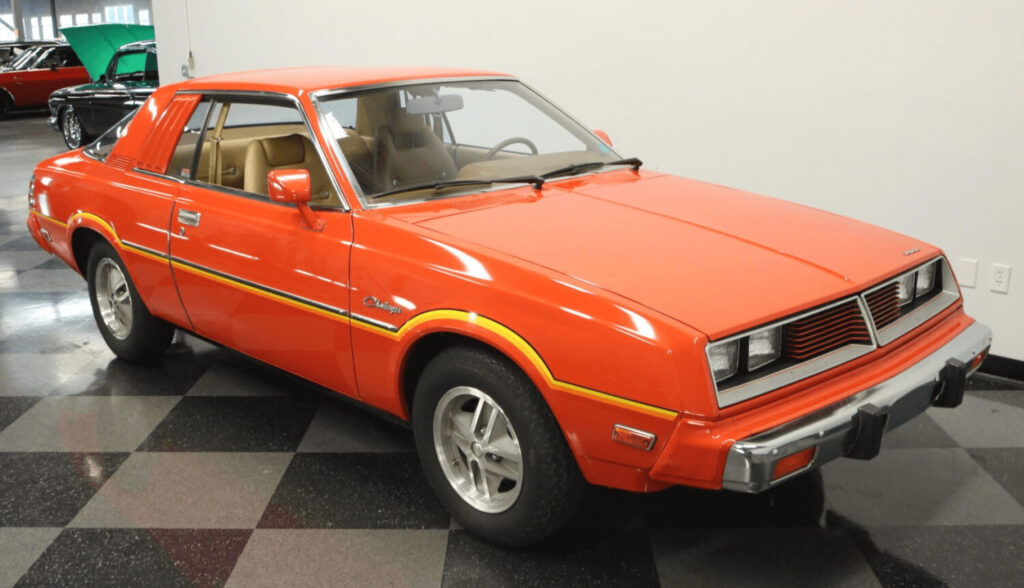 The second-generation Challenger was introduced in 1978, during the midst of the oil crisis. Shifting to the lighter, smaller F-Body platform — a common ground with cars like Plymouth Volare and Dodge Aspen— brought a significant change for this second-gen Challenger. The revved-up heart of the second-gen Challenger boasted a diversity in powerhouses, featuring engines like the robust 225 cubic-inch inline-six and beefy V8s at both 318 and 360 cubic inches. Despite packing less punch than the model before it, this second-gen Challenger remained a force to be reckoned with on the asphalt.
The second-generation Challenger was introduced in 1978, during the midst of the oil crisis. Shifting to the lighter, smaller F-Body platform — a common ground with cars like Plymouth Volare and Dodge Aspen— brought a significant change for this second-gen Challenger. The revved-up heart of the second-gen Challenger boasted a diversity in powerhouses, featuring engines like the robust 225 cubic-inch inline-six and beefy V8s at both 318 and 360 cubic inches. Despite packing less punch than the model before it, this second-gen Challenger remained a force to be reckoned with on the asphalt.
The redesigned Challenger kept its sporty essence but adopted a sleeker, more efficient shape. Sporting a fresh, streamlined look, the Challenger’s evolution featured an aerodynamic design punctuated by its leaning grille and alluring two-door coupe silhouette. The refreshed interior sported a contemporary dashboard and gauges. Even with its downsized build and less muscle, the second-gen Challenger won hearts – it was a hit for folks wanting to dodge those 70s gas-guzzlers without skimping on style.
The 3rd Generation: Returns After a 25-Year Hiatus
 After a hiatus of nearly three decades, the Dodge Challenger made its triumphant return in 2008. The third generation Challenger was a true retro-modern muscle car that embodied the spirit of the original car. Though bulkier and weightier than its forerunners, it still nailed the quintessential vibe of the muscle car epoch. Sporting a gutsy front fascia marked by the legendary split grille, the car boasted a sleek long hood coupled with a compact deck. The inside was all contemporary, yet it didn’t forget its roots – with old-school dials and accents. The Challenger was available with a range of powerful engines, from the 3.5-liter V6 to the mighty 6.2-liter supercharged Hellcat V8.
After a hiatus of nearly three decades, the Dodge Challenger made its triumphant return in 2008. The third generation Challenger was a true retro-modern muscle car that embodied the spirit of the original car. Though bulkier and weightier than its forerunners, it still nailed the quintessential vibe of the muscle car epoch. Sporting a gutsy front fascia marked by the legendary split grille, the car boasted a sleek long hood coupled with a compact deck. The inside was all contemporary, yet it didn’t forget its roots – with old-school dials and accents. The Challenger was available with a range of powerful engines, from the 3.5-liter V6 to the mighty 6.2-liter supercharged Hellcat V8.
The Challenger SXT, at its core, came to life with a 3.5-liter V6 engine churning out 250 horsepower and an equal amount of torque. You could either get the SXT with a five-speed auto or go manual with six gears. The Challenger R/T, a mid-tier model, packs quite the punch with its 5.7-liter Hemi V8 engine churning out a solid 370 horsepower and a hefty 395 lb-ft of torque. The R/T was available with a six-speed manual or a five-speed automatic transmission. The Challenger SRT8, the cream of the crop, roared to life with a 6.1-liter Hemi V8 engine that boasted an impressive 425 horsepower and delivered a torque of 420 lb-ft. The SRT8 was only available with a five-speed automatic transmission.
In 2015, Dodge released the third-generation Challenger, and it was love at first sight for car enthusiasts around the world. Keeping its iconic charm, the 2015 Challenger cleverly fused some modern flair into its timeless aesthetic. The car’s face got a slight upgrade with an expanded grille, paired with fresh LED lights up front and at the back. On top of that, they’ve overhauled the cabin with a user-friendly dashboard and a new 7-inch touchscreen display for your infotainment desires. You could get the Challenger with a bunch of different engines, like the standard 3.6 V6 or if you wanted more power, there were two Hemi V8 options – one was a 5.7-liter and the other, an even beefier 6.4-liter. Also included for the 2015 model year was the introduction of the only All Wheel Drive muscle car, the Challenger GT AWD package. was the But the real star of the show was the SRT Hellcat, which boasted a supercharged 6.2-liter V8 that produced a mind-blowing 707 horsepower. The Hellcat revolutionized the Challenger, quickly catapulting it to one of the most coveted muscle cars on the planet.
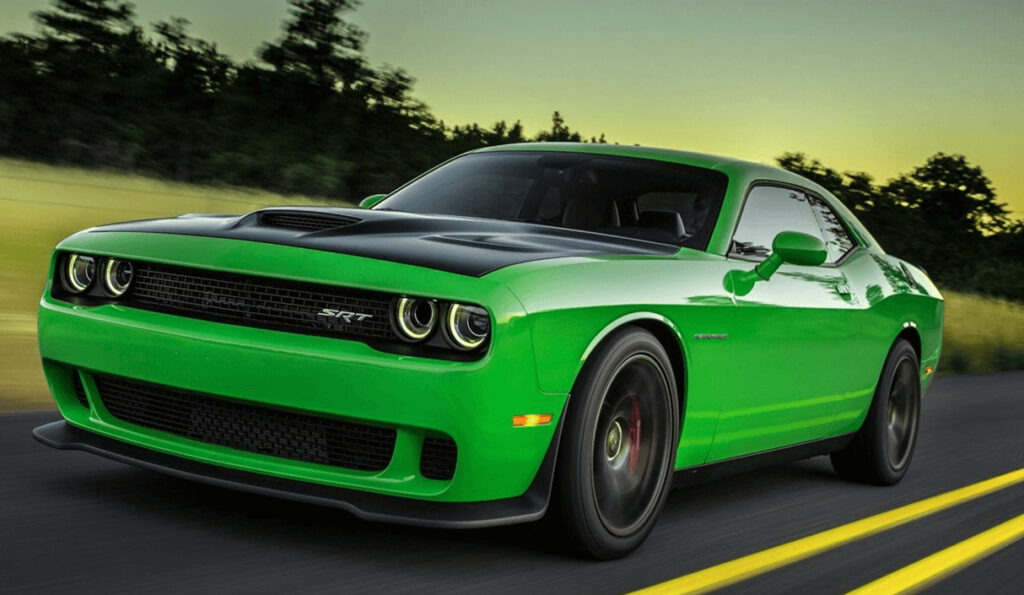 Back in 2017, Dodge unveiled a beast of a machine – the Challenger SRT Demon; it was like they took the power and performance of the classic Challenger and cranked it up to eleven. The Demon’s supercharged 6.2-liter V8 produced a whopping 840 horsepower, and it could go from 0 to 60 in just 2.3 seconds. Only 3,300 models of the Demon were ever made, landing it a spot as one of the most sought-after and exclusive Challengers in history. In 2018, Dodge released the Challenger SRT Hellcat Redeye, which was a slightly tamer version of the Demon. The Redeye featured the same supercharged 6.2-liter V8 as the Demon, but with a slightly lower output of 797 horsepower. The Redeye was still a beast, though, and it could go from 0 to 60 in just 3.4 seconds. In 2019 Dodge refreshed the Challenger, updating its technology and adding new driver assistance features. The roster stayed pretty much the same, keeping the standard V6 engine and a trio of muscular choices: the 5.7-liter Hemi V8, its beefier sibling – the 6.4-liter Hemi V8, along with Hellcat’s supercharged powerhouse – a 6.2 liter-V8.
Back in 2017, Dodge unveiled a beast of a machine – the Challenger SRT Demon; it was like they took the power and performance of the classic Challenger and cranked it up to eleven. The Demon’s supercharged 6.2-liter V8 produced a whopping 840 horsepower, and it could go from 0 to 60 in just 2.3 seconds. Only 3,300 models of the Demon were ever made, landing it a spot as one of the most sought-after and exclusive Challengers in history. In 2018, Dodge released the Challenger SRT Hellcat Redeye, which was a slightly tamer version of the Demon. The Redeye featured the same supercharged 6.2-liter V8 as the Demon, but with a slightly lower output of 797 horsepower. The Redeye was still a beast, though, and it could go from 0 to 60 in just 3.4 seconds. In 2019 Dodge refreshed the Challenger, updating its technology and adding new driver assistance features. The roster stayed pretty much the same, keeping the standard V6 engine and a trio of muscular choices: the 5.7-liter Hemi V8, its beefier sibling – the 6.4-liter Hemi V8, along with Hellcat’s supercharged powerhouse – a 6.2 liter-V8.
For 2020, Dodge introduced the Challenger 50th Anniversary Edition, which was a nod to the Challenger’s 50 years of existence. The Anniversary Edition boasted a one-of-a-kind color scheme, distinctive emblems, and a few exclusive touches to the interior. Beneath its metal beast of a body, you could pick from two powerhouses – the 5.7-liter Hemi V8 or its bigger brother, the meatier 6.4-liter Hemi V8. In 2021, Dodge released the Challenger SRT Super Stock, which was the ultimate expression of the Challenger’s power and performance. The Super Stock was powered by the same supercharged 6.2-liter V8 as the Hellcat and Redeye models, but with a higher output of 807 horsepower. Believe it or not, the Super Stock clocks a mind-blowing 3.25 seconds for the 0-60 sprint, placing it firmly among the globe’s swiftest production vehicles.
The 4th Generation Challenger: Keeping the Muscle Car Spirit Alive
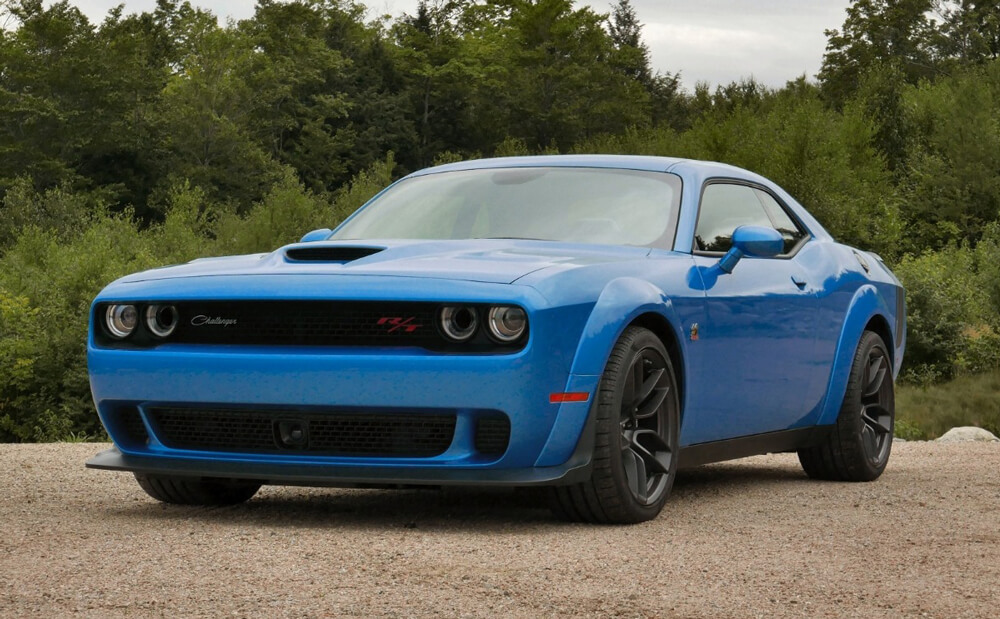
Source: DividingLine
The current, fourth-generation Dodge Challenger was introduced for the 2021 model year. Although it shares a familiar face with its ancestors, the fourth-gen Challenger packs a punch with several substantial upgrades and fine-tunings. While it’s true that the car shares its roots with the prior generation, they’ve really beefed it up to kick performance and handling up a notch.
One of the biggest changes for the fourth-gen Challenger is the addition of a new model: the Challenger SRT Super Stock. The beast under the hood is a tweaked Hellcat engine, cranking out an insane 807 horsepower and 707 lb-ft of torque. The Super Stock doesn’t just look good, it’s also packed with enhanced features like a more powerful suspension, larger brakes, and an innovative rear axle ratio for improved performance.
The fourth-gen Challenger’s got some fresh upgrades, including a revamped grille and front fascia, plus new LED lights in both the front and back. They’ve upgraded the ride with a fresh infotainment setup, rocking a bigger touchscreen and even better ways to connect. In essence, the fourth-gen Challenger successfully steps up to the plate as a fitting heir of that iconic muscle car legacy we all know and love. The latest generation Challenger carries on the muscle car’s legacy of classic style and modern power.
The Dodge Challenger Last Call Editions: A Final Farewell to the Legend
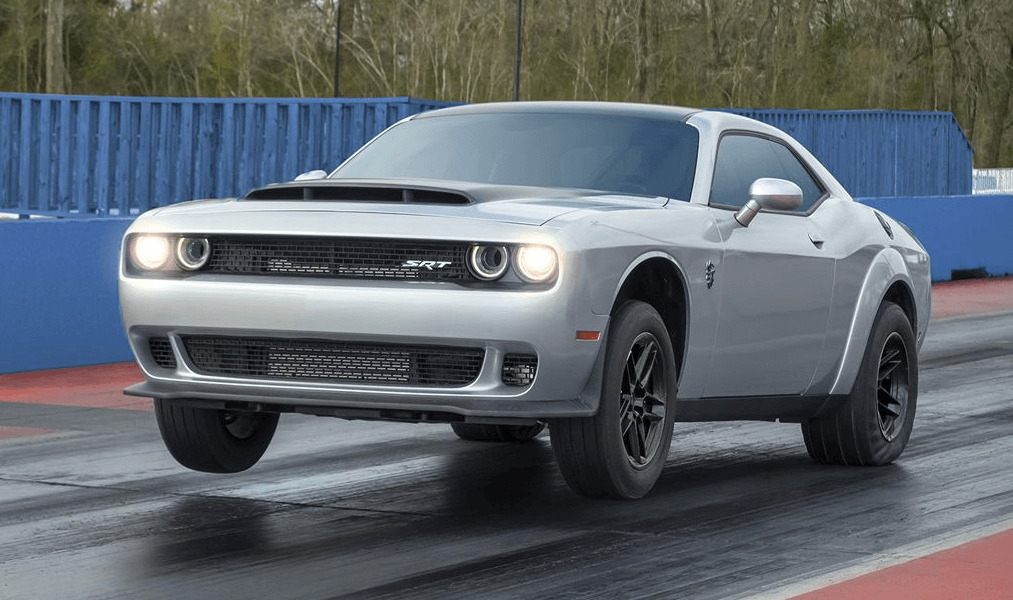 The Dodge Challenger Last Call edition has been making headlines recently. Dodge has been producing a series of Last Call special edition models to pay tribute to the end of the V8-powered muscle car era. The Last Call edition models come with a commemorative aluminum plaque that showcases the vehicle’s silhouette and the place where it was built. The final model in the Last Call series is the 1,025-horsepower 2023 Dodge Challenger SRT Demon 170, which has been hailed as the quickest, fastest, and most powerful muscle car in the world. Dodge has unveiled a total of seven Last Call special edition models, including the 2023 Challenger Shakedown, 2023 Charger Redeye Gold Rush, 2023 Charger Rapture, 2023 Challenger Midnight, 2023 Charger Hellcat Ozark, and the 2023 Challenger Black Ghost. So, these Last Call versions signal the final bow for our beloved V8-muscle cars, ushering in a new era dominated by electric vehicles.
The Dodge Challenger Last Call edition has been making headlines recently. Dodge has been producing a series of Last Call special edition models to pay tribute to the end of the V8-powered muscle car era. The Last Call edition models come with a commemorative aluminum plaque that showcases the vehicle’s silhouette and the place where it was built. The final model in the Last Call series is the 1,025-horsepower 2023 Dodge Challenger SRT Demon 170, which has been hailed as the quickest, fastest, and most powerful muscle car in the world. Dodge has unveiled a total of seven Last Call special edition models, including the 2023 Challenger Shakedown, 2023 Charger Redeye Gold Rush, 2023 Charger Rapture, 2023 Challenger Midnight, 2023 Charger Hellcat Ozark, and the 2023 Challenger Black Ghost. So, these Last Call versions signal the final bow for our beloved V8-muscle cars, ushering in a new era dominated by electric vehicles.
The Challenger has managed to stay exciting and relevant from its early Mustang-rival days to its modern muscle car status. From its early days as a Mustang competitor to its modern-day status as a true American muscle car, the Challenger has managed to stay relevant and exciting throughout the years. Every era introduced its own distinct elements and traits, yet a single aspect always held steady: The Challenger’s dedication to delivering raw power and unparalleled performance is unwavering.
Moving forward, it’s going to be a gripping journey watching Dodge fine-tune and take their legendary muscle car, the Challenger, up another notch. Whether you prefer the classic lines of the first generation or the modern technology of the current iteration, there’s no denying that the Challenger has earned its place in automotive history. So if you’re a gearhead looking for a truly thrilling driving experience, look no further than the Dodge Challenger.
Disclaimer: The writers of this article may have used artificial intelligence to help them with some of the material. It should not be a replacement for professional help.







